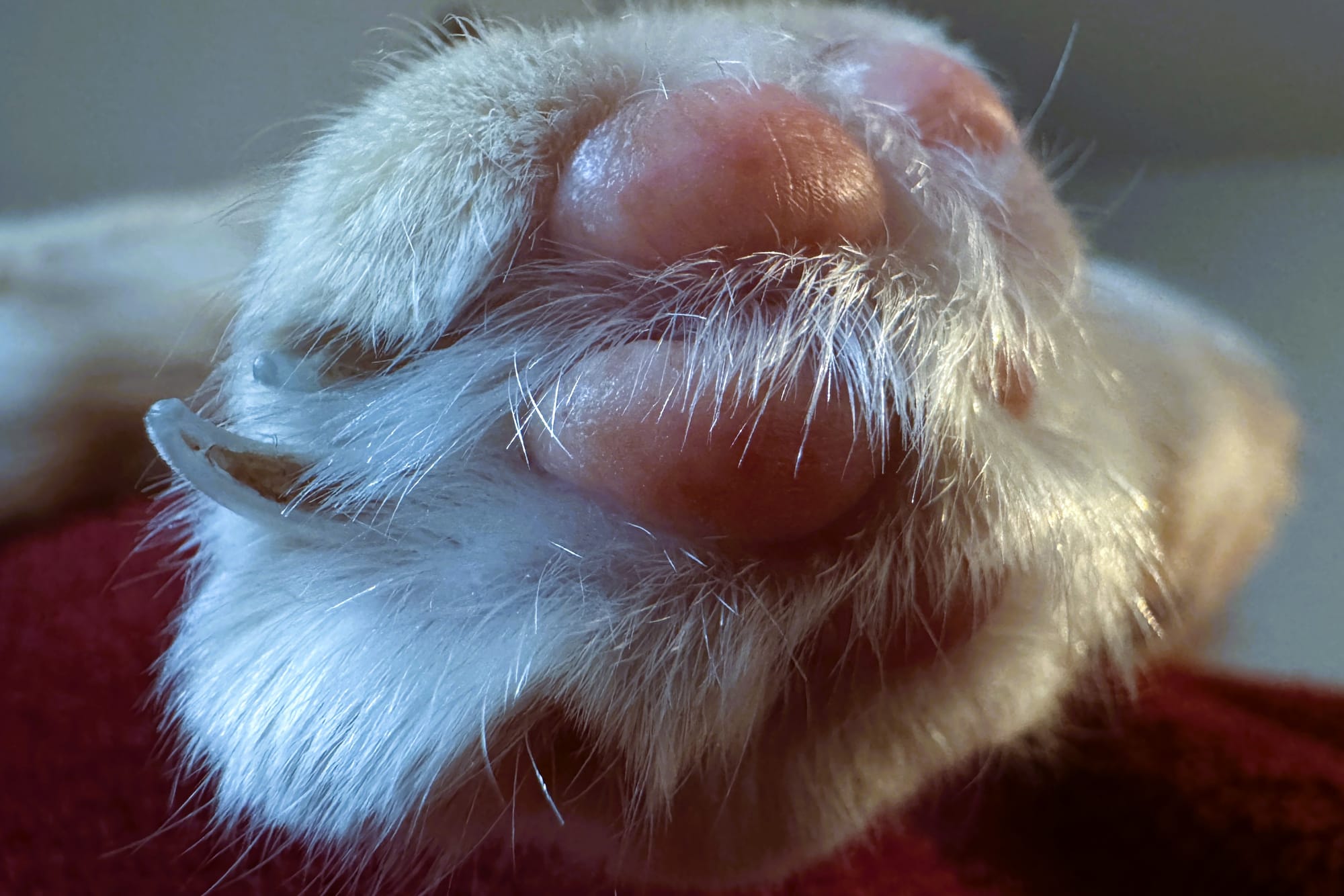Exploring Cat Claw Hygiene: Methods and Tips for Cat Owners

Exploring Cat Claw Hygiene: Methods and Tips for Cat Owners
Cats are well-known for their meticulous self-grooming habits, but their claws often require extra care from their owners to ensure they remain healthy and clean. Poor claw hygiene can lead to discomfort, infections, and even behavioral issues in cats. As a responsible cat owner, understanding how to properly care for your feline friend’s claws is essential. This article explores various methods and tips to maintain your cat’s claw hygiene effectively.
1. Regularly Trim Your Cat’s Claws
Cats’ claws can grow sharp and long if left untrimmed, posing risks to both the cat and the humans around them. Regular trimming helps to maintain proper length, preventing the claws from becoming overgrown or curling into the paw pad, which can cause pain or infections. Use a specific cat nail clipper, as human nail clippers might not be suitable.
- Trim your cat’s claws every 2–4 weeks, depending on their growth rate.
- Ensure you only cut the sharp tip of the claw and avoid cutting into the sensitive, pink area known as the quick.
- If your cat is resistant, try to trim one or two nails at a time to avoid stressing them.
2. Provide Scratching Posts
Scratching is a natural behavior for cats. It not only helps them keep their claws healthy and sharp but also prevents overgrowth. Without a proper surface to scratch on, cats may resort to furniture, carpets, or other household items.
- Invest in multiple scratching posts and place them around your home in areas your cat frequents.
- Choose scratching posts made of materials your cat enjoys, such as sisal rope, cardboard, or carpet.
- Encourage your cat to use the scratching post by applying catnip or dangling toys near it.
3. Inspect Your Cat’s Claws Regularly
It’s essential to regularly examine your cat’s claws to catch any problems early. Overgrown claws, cracks, or dirt buildup can be indicators of poor hygiene or health issues. Consistent monitoring can help address potential problems before they escalate.
- Check your cat’s claws for signs of discoloration, which could indicate an infection.
- Look out for splitting or fraying claws that may require attention or trimming.
- Inspect the paw pads and the space between claws for debris, wounds, or foreign objects.
4. Clean Your Cat’s Claws When Necessary
Although cats are excellent at keeping themselves clean, there may be times when dirt, litter, or other substances get stuck in their claws, requiring your intervention. Cleaning helps remove harmful bacteria and reduces the risk of infection.
- Use a damp, soft cloth to gently clean dirt or debris from your cat’s paws and claws.
- Avoid using harsh chemicals or products not specifically designed for pets.
- If your cat has stepped into something sticky or harmful, consult a veterinarian to ensure safe removal methods.
5. Be Mindful of Outdoor Cats
Cats that spend time outdoors may require extra attention to their claws, as they are more likely to encounter dirt, bacteria, and potential injuries. Outdoor cats are also prone to nails wearing down naturally due to climbing and scratching rough surfaces.
- Conduct regular checks for injuries, thorns, or infections on your outdoor cat’s claws.
- Provide regular flea and tick treatments, as parasites can affect your cat’s paws and overall health.
- Consider bringing your outdoor cat indoors during specific seasons or at night to minimize risks of harm to their claws and paws.
6. Introduce Claw Care Gradually
If your cat is not used to claw care, introducing any new grooming routine might be a challenge. Cats often feel uncomfortable or stressed during unfamiliar activities, so being patient and gradual is key.
- Begin by gently touching and massaging your cat’s paws to get them accustomed to handling.
- Introduce grooming tools gradually and let your cat sniff and explore them before use.
- Reward your cat with praise, treats, or playtime after each successful claw care session.
7. Consult Your Veterinarian
If you notice unusual growths, discoloration, or persistent issues with your cat’s claws, seeking professional advice is crucial. Your veterinarian can conduct a proper examination and recommend treatments or further care routines.
- Routine veterinary visits help ensure your cat’s claws and overall health are well-maintained.
- Discuss professional claw trimming or grooming services if you find it difficult to manage at home.
- Alert your vet to behavioral changes, as these could signal pain or discomfort related to claw issues.
8. Avoid Declawing
In the past, declawing was often recommended as a solution to scratching problems, but it is now widely recognized as an inhumane practice. Declawing involves the amputation of the last bone in each toe, which is extremely painful and can lead to long-term physical and psychological issues.
- Instead of declawing, focus on providing scratching alternatives and regular claw trimming.
- Ensure your home setup promotes healthy scratching behavior, such as using scratching posts tailored to your cat’s preferences.
- Learn about humane alternatives like nail caps, which can prevent destructive scratching without causing harm.
9. Maintain a Clean Environment
Keeping your cat’s living environment clean contributes greatly to their overall hygiene, including their claws. Paws and claws can collect dirt and bacteria from their surroundings, so a clean environment reduces the risk of infection.
- Regularly clean your cat’s bedding, litter box, and play areas.
- Vacuum carpets and furniture to minimize dirt and allergens that might stick to your cat’s paws.
- Wipe surfaces that your cat frequently climbs on to remove bacteria and debris.
10. Recognize Signs of Discomfort
Sometimes, issues with claw hygiene can cause your cat discomfort, which they may show through their behavior or posture. Being observant can help you catch signs of trouble early.
- Watch for limping or favoring a paw, as this could be a sign of pain or injury.
- Take note if your cat excessively licks or bites at their paws, which may suggest irritation or infection.
- Check for changes in activity levels or reluctance to scratch, climb, or play, which could point to claw problems.
11. Keep Your Cat Relaxed During Grooming
Stress-free grooming sessions lead to better and more consistent claw care. Working with a calm cat reduces the risk of accidents and ensures they associate grooming with positivity.
- Choose a quiet, comfortable location for grooming sessions.
- Handle your cat gently and talk to them softly during claw care.
- Stop if your cat becomes anxious or restless, and try again later.
Conclusion
Proper claw hygiene is vital for your cat’s overall health and well-being. By incorporating these methods and tips into your routine, you can ensure your cat’s claws remain healthy, clean, and well-maintained. Whether it’s trimming their nails, providing scratching posts, or keeping an eye out for signs of discomfort, your proactive efforts as a pet owner will make life more comfortable and enjoyable for your feline companion. Remember, regular care and a loving approach go a long way in building trust and keeping your cat happy.


